Cauliflower, with its ivory-hued curds, is a versatile and nutritious addition to any vegetable garden.
Whether you’re a seasoned gardener or a novice, cultivating this cruciferous delight can be a satisfying endeavor.
In this comprehensive guide, we will explore the ins and outs of growing and caring for cauliflower, sharing valuable insights and tips along the way.
Benefits of Growing Cauliflower
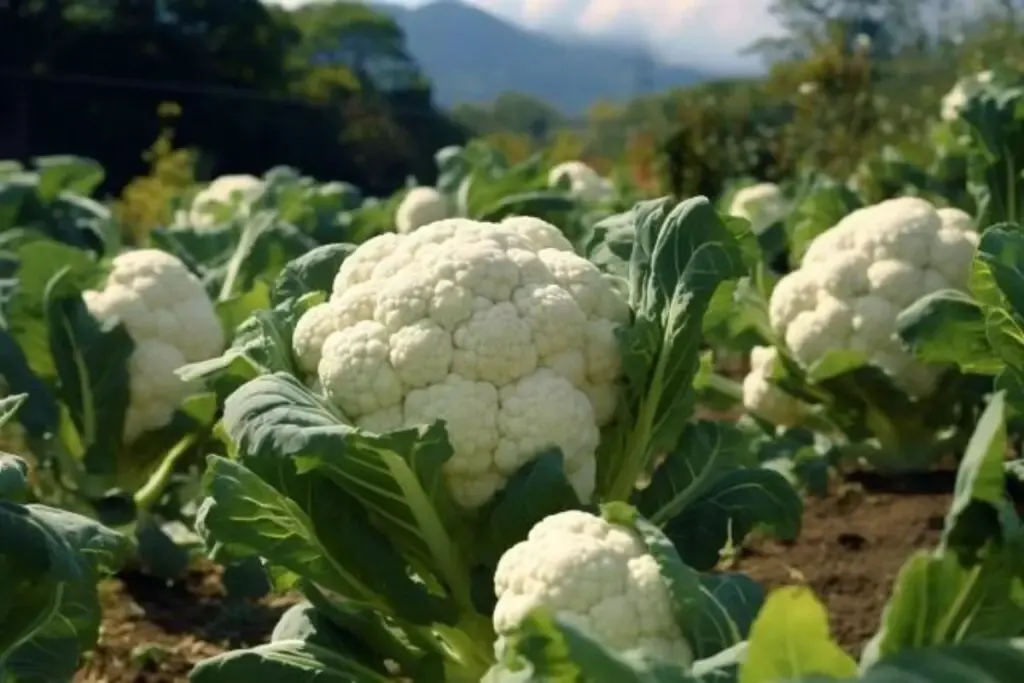
1. Nutritional Powerhouse
Cauliflower is packed with vitamins, minerals, and antioxidants. It’s an excellent source of vitamin C, vitamin K, and fiber, contributing to a healthy diet.
2. Versatile Culinary Use
From creamy cauliflower soups to roasted cauliflower steaks, this vegetable’s versatility in the kitchen is unmatched. It can be steamed, mashed, riced, or roasted to create a variety of dishes.
3. Cool-Season Crop
Cauliflower is well-suited for cool weather, making it an ideal choice for early spring and fall gardens when other crops may struggle.
My Favorite Cauliflower Varieties
Now, let’s delve into some cauliflower varieties that I particularly enjoy growing in my garden.
These varieties are not only delicious but also relatively easy to cultivate, making them perfect for gardeners of all levels:
1. Snow Crown
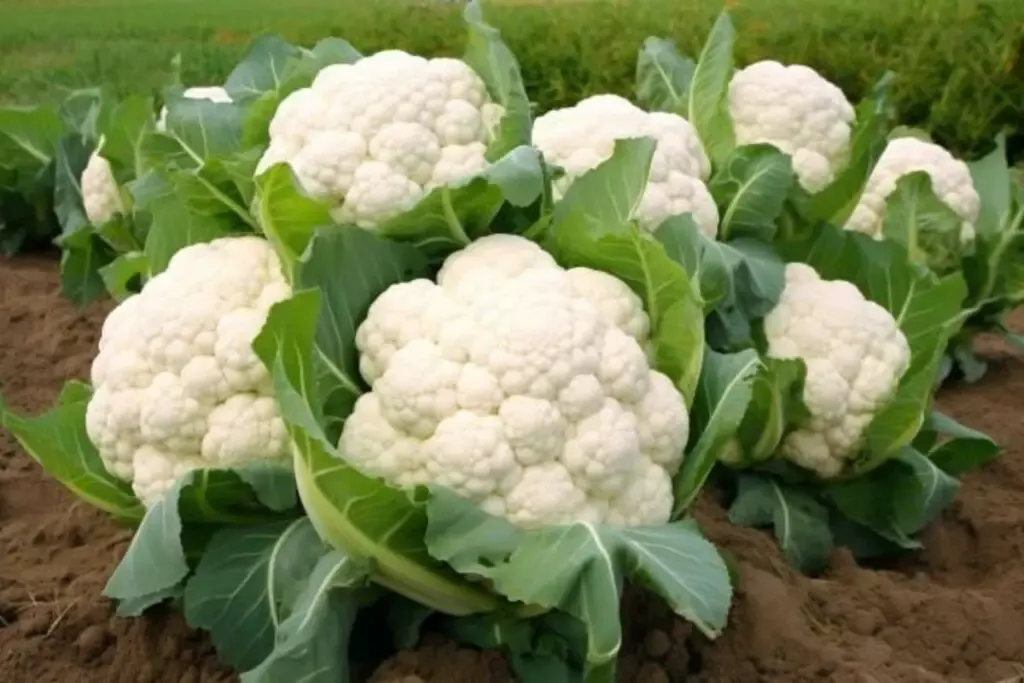
Snow Crown is a classic cauliflower variety known for its reliable performance. It produces large, pure-white heads with a mild, nutty flavor.
It’s a great choice for beginners due to its disease resistance and adaptability.
2. Purple of Sicily
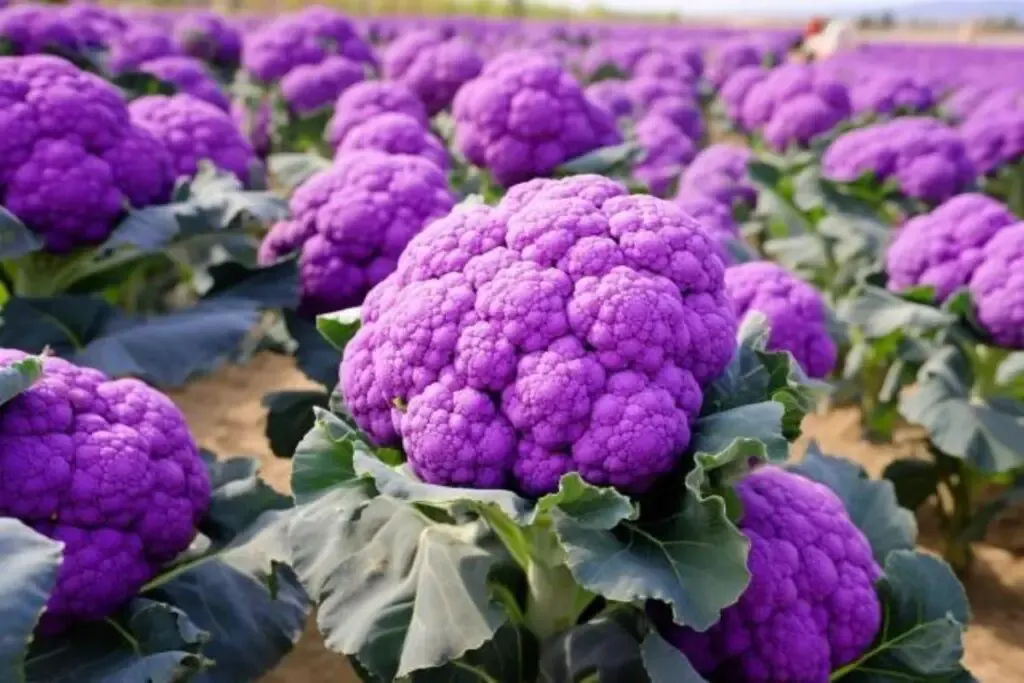
For a colorful twist on traditional cauliflower, try Purple of Sicily. This heirloom variety boasts vibrant purple heads that turn green when cooked. Its unique appearance adds flair to your dishes, and it’s surprisingly easy to grow.
3. Cheddar
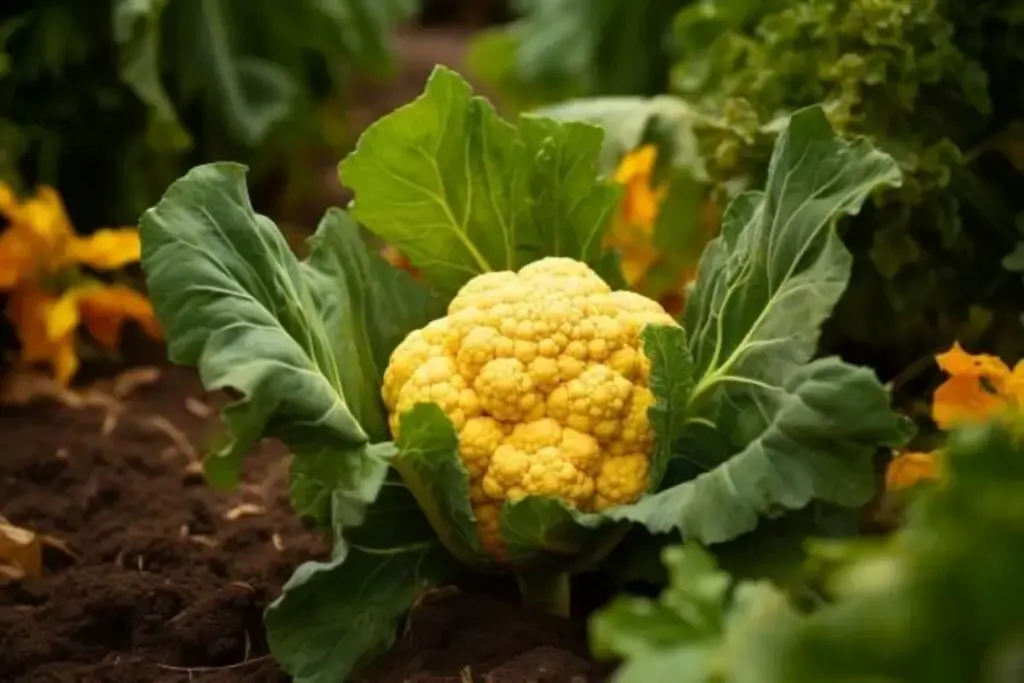
Cheddar cauliflower is prized for its brilliant orange heads, which are not only visually striking but also rich in beta-carotene. It has a mild, slightly sweet flavor and is a hit with kids and adults alike.
Cauliflower Care
Caring for your cauliflower plants is crucial to ensure a successful harvest of those crisp, creamy heads.
In this section, we’ll cover various aspects of cauliflower care, from planting to providing the right conditions for optimal growth.
Planting
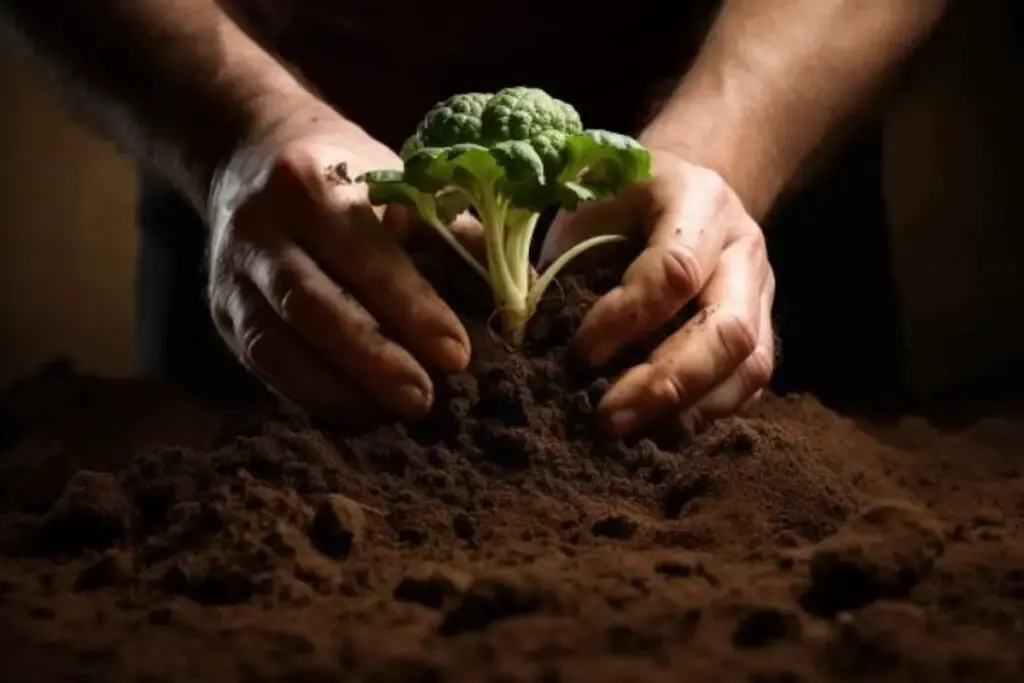
Proper planting sets the stage for healthy cauliflower development. Follow these steps to get started:
- Select the Right Location: Choose a location with full sun exposure. Cauliflower thrives in temperatures between 60°F and 75°F (15°C to 24°C) and requires at least 6 hours of direct sunlight daily.
- Soil Preparation: Cauliflower prefers well-draining, fertile soil with a pH level between 6.0 and 7.0. Amend the soil with organic matter, such as compost, to improve fertility and structure.
- Spacing: Plant cauliflower seedlings 18-24 inches apart in rows, with rows spaced 24-36 inches apart. Providing ample space ensures good air circulation and prevents overcrowding.
Light
Cauliflower thrives in bright, consistent light conditions. Ensure that your cauliflower plants receive full sun exposure. Inadequate light can result in leggy growth and smaller heads.
Soil
Well-prepared soil is essential for healthy cauliflower growth. Pay attention to soil quality:
- Well-Draining Soil: Cauliflower dislikes standing water, so well-draining soil is a must. Incorporate organic matter to improve drainage.
- pH Level: Aim for a soil pH between 6.0 and 7.0, which is slightly acidic to neutral. This pH range supports nutrient uptake and overall plant health.
Water
Proper watering is vital to prevent issues like head rot and ensure healthy cauliflower development. Keep the soil consistently moist, but not waterlogged.
Cauliflower needs regular watering, especially during dry spells. Applying a layer of mulch around the base of the plants helps retain moisture and regulate soil temperature.
Temperature and Humidity
Cauliflower is a cool-season crop and prefers moderate temperatures. Here’s what to consider:
- Temperature: Cauliflower grows best in temperatures between 60°F and 75°F (15°C to 24°C). It can tolerate light frost but may bolt (produce flowers prematurely) in hot weather.
- Humidity: Cauliflower thrives in moderate humidity levels. Proper spacing and good air circulation can help prevent fungal diseases.
Fertilizer
Feeding your cauliflower plants with the right nutrients is key to a successful harvest. Use a balanced, slow-release fertilizer with a ratio of 10-10-10 or 14-14-14. Apply fertilizer according to the manufacturer’s instructions, usually at planting and during head formation.
Harvesting Cauliflower
Knowing when and how to harvest cauliflower is essential to enjoy the best flavor and texture. Here’s how to do it:
- Check for Readiness: Cauliflower heads are ready for harvest when they reach a compact, firm size, typically around 6-8 inches (15-20 cm) in diameter. The curds should be dense and white.
- Timing Matters: Harvest cauliflower heads promptly, as they can turn yellow or become overmature if left on the plant for too long. The flavor is at its peak when heads are young and crisp.
- Cut the Head: To harvest, use a sharp knife to cut the head of cauliflower cleanly from the stem, leaving a few inches of stem attached. Be careful not to damage the remaining leaves or surrounding plants.
Pruning
Pruning cauliflower isn’t as common as with some other vegetables, but it can help improve head formation:
- Leaf Removal: As the cauliflower head begins to form, you may choose to tie the outer leaves loosely over the head to blanch it, which results in a whiter appearance. Remove any damaged or yellowing leaves regularly to maintain good airflow.
Propagating
Cauliflower is primarily grown from seeds, but you can also propagate it from cuttings:
- From Seeds: Starting cauliflower from seeds is the most common method. Sow seeds indoors or directly in the garden, following the recommended spacing and depth.
- From Cuttings: While less common, cauliflower can be propagated from stem cuttings. Take a cutting with at least one node, allow it to root in a well-draining soil mix, and transplant it once it has established roots.
How to Grow Cauliflower From Seed
Growing cauliflower from seed is a rewarding experience. Here’s a step-by-step guide:
- Select Quality Seeds: Choose high-quality cauliflower seeds from a reputable source. Pay attention to the variety and its suitability for your climate.
- Starting Indoors: In regions with short growing seasons, start cauliflower seeds indoors 4-6 weeks before the last expected frost date. Use biodegradable pots or seed trays with a quality seed starting mix.
- Transplanting: Once seedlings have at least two true leaves and all danger of frost has passed, transplant them into the garden. Space seedlings 18-24 inches apart.
- Provide Proper Care: Keep the soil consistently moist, and use mulch to retain moisture. Fertilize according to recommendations, and watch for signs of pests and diseases.
- Blanching (Optional): If you want to blanch cauliflower heads for a whiter appearance, tie the outer leaves over the developing head when it reaches a size of about 2-3 inches (5-7.5 cm).
Growing in Pots
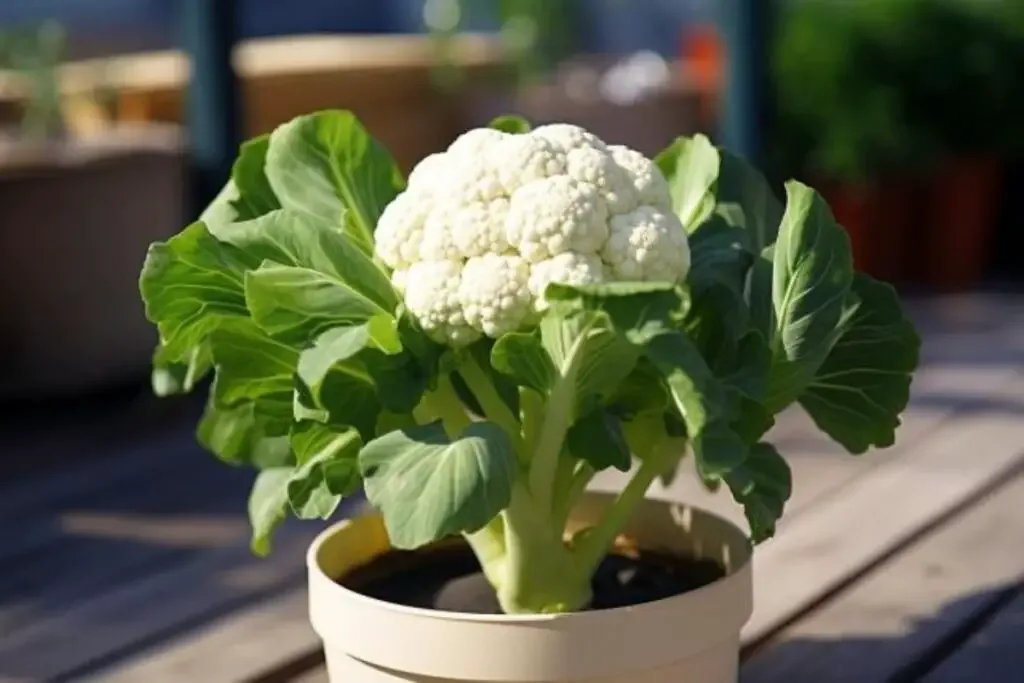
Cauliflower can also thrive in containers. Here are some tips for growing cauliflower in pots:
- Container Size: Choose a large container with a capacity of at least 5 gallons for each cauliflower plant. Ensure the container has good drainage.
- Potting Mix: Use a high-quality potting mix with added organic matter to ensure proper drainage and nutrient availability.
- Spacing: Plant one cauliflower seedling per container. Provide adequate spacing between containers to prevent overcrowding.
- Water and Fertilize: Container-grown cauliflower may require more frequent watering and feeding. Monitor soil moisture and use a balanced, slow-release fertilizer.
Overwintering
Cauliflower is typically grown as a cool-season crop, and overwintering it can be a bit challenging due to its sensitivity to frost and cold temperatures. However, in regions with mild winters, you can attempt to overwinter cauliflower for extended harvests:
- Protect from Frost: Use row covers or cloths to shield the plants from frost and freezing temperatures during the winter months.
- Mulch: Apply a thick layer of mulch around the base of the plants to insulate the soil and protect the roots from extreme cold.
- Choose Cold-Resistant Varieties: Some cauliflower varieties are more cold-tolerant than others. Check with local gardening experts or nurseries for suitable varieties for your area.
Transplanting
Transplanting cauliflower seedlings can be a useful technique for extending your growing season or ensuring a strong start for your plants:
- Timing: Start cauliflower seeds indoors 4-6 weeks before your last expected frost date. Transplant seedlings outdoors when they have at least two true leaves and all danger of frost has passed.
- Harden Off: Gradually acclimate seedlings to outdoor conditions by exposing them to the outdoors for a few hours each day over the course of a week.
- Spacing: Plant cauliflower seedlings 18-24 inches apart in rows, similar to direct-seeded plants.
- Handle with Care: When transplanting, handle the seedlings gently to avoid damaging the roots or stems.
Common Pests & Diseases
While cauliflower is a relatively low-maintenance crop, it can encounter some common pests and diseases.
Here are a few issues you may face and how to address them:
- Aphids: Aphids are small insects that can infest cauliflower plants, sucking out plant juices. Use a strong spray of water or insecticidal soap to control them.
- Cabbage Worms: These green caterpillars can damage cauliflower leaves. Handpick them or use biological control methods like releasing parasitic wasps.
- Powdery Mildew: Powdery mildew can affect cauliflower leaves, causing a white, powdery growth. Improve air circulation and use fungicides if necessary.
- Clubroot: Clubroot is a soil-borne disease that causes stunted growth and deformed roots. Practice crop rotation and avoid planting cauliflower in affected areas.
- Flea Beetles: These tiny black beetles can chew small holes in cauliflower leaves. Use row covers or insecticides to protect plants.
In your cauliflower-growing journey, occasional encounters with pests and diseases are a part of the process.
Remember that with vigilance and proper care, you can overcome these challenges and enjoy the satisfaction of harvesting your own homegrown cauliflower.
Whether you’re aiming for a bountiful harvest or simply seeking the joy of nurturing these versatile vegetables, cauliflower can be a rewarding addition to your garden.
Happy gardening, and may your cauliflower thrive and grace your table with its delicious, nutritious florets!

